Discovering Dubai's Unique Enclosed Experiences
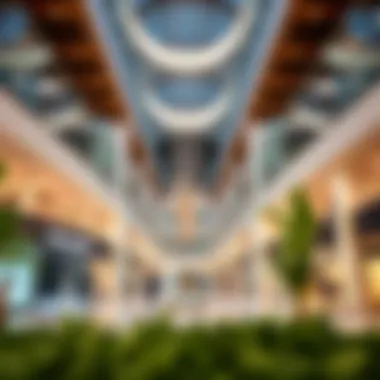
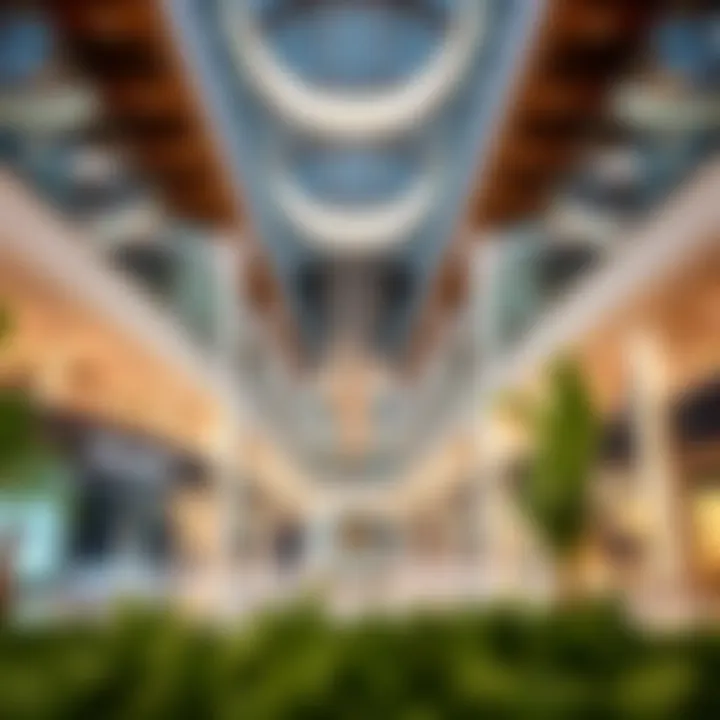
Intro
Dubai is not just a city of soaring skyscrapers and sun-soaked beaches. Beneath its dazzling facade lies a myriad of enclosed spaces that offer unique experiences and architectural marvels. This article delves into the significance of these indoor locales, exploring how they contribute to Dubai's rich urban tapestry. From shopping meccas like The Dubai Mall to the artistic enclaves of Alserkal Avenue, these spaces foster social interactions, cultural exchange, and economic vitality.
Understanding the role that closed spaces play in urban life in Dubai is essential for investors, locals, and expats alike. As the city continues to grow, these hidden gems showcase not only the innovative spirit of the region but also potential investment opportunities.
In the sections that follow, we will provide a detailed examination of the current trends in Dubai's real estate market, analyze future predictions, and explore high-return investment areas. The intricate interactions within these spaces also highlight the lifestyle shifts and consumer behavior that define modern Dubai. Whether you're a seasoned investor or a newcomer exploring opportunities, grasping the essence of these enclosed environments is key to making informed decisions.
Prelude to Dubai's Enclosed Spaces
Dubai, a city renowned for its breathtaking skyline and vibrant outdoor culture, holds a vast array of enclosed spaces that often go unnoticed. These indoor environments not only provide refuge from the desert heat but also serve as hubs of social interaction, commerce, and innovation. The significance of exploring enclosed spaces in Dubai extends beyond mere aesthetics; it offers insights into the city's myriad offerings and the architectural ingenuity that shapes its urban identity.
One of the key elements to appreciate about these spaces is their functional diversity. Shopping malls like the Dubai Mall and the Mall of the Emirates do much more than house retail shops; they integrate entertainment, dining, and cultural experiences under one roof. Such multifunctional spaces cater to the needs of a growing expatriate community and the diverse tourist population, creating a fusion of cultures that spices up everyday life.
Moreover, these enclosed areas are designed with an acute awareness of social dynamics. They create environments where people can congregate, interact, and forge connections. For investors, understanding these dynamics is crucial, as they indicate consumer behavior and preferences in this unique market. Each mall or cultural venue has been meticulously designed, giving insight into how physical spaces can enhance human interaction.
Benefits of Enclosed Spaces in Dubai also include:
- Climate Control: They provide a comfortable atmosphere regardless of the scorching outdoor temperatures.
- Safety and Security: Enclosed areas often feature enhanced security measures, making them more appealing for families and tourists.
- Cultural Exchanges: Spaces such as galleries and theaters offer platforms for showcasing local talent and promoting cultural dialogue.
As Dubai continues to expand, the role of these enclosed spaces will only grow in importance. They are not static structures; instead, they represent dynamic ecosystems that adapt to the city’s evolving needs. By examining these indoor environments, we gain a deeper understanding of urban life in Dubai and the creativity that drives its development.
"Dubai's enclosed spaces reflect the city's ability to innovate while honoring the traditions and social values of its diverse populace."
In this section, we embark on a journey through the various types of enclosed spaces that define Dubai, laying the groundwork for a comprehensive exploration of their economic, social, and cultural impacts.
The Importance of Enclosed Spaces in Urban Development
The architectural landscape of Dubai features a striking blend of traditional and modern design, making the city a global beacon of innovation. Enclosed spaces, particularly, play an integral role in shaping urban development. They symbolize progress, serve various functions, and cater to the diverse needs of residents and visitors alike. When discussing enclosed spaces in urban planning, several aspects come to the forefront.
One primary point to consider is the economic significance they bring. These spaces are marketplaces of sorts, generating revenue through retail, entertainment, and service sectors. Offering businesses a controlled environment to operate, they often lead to higher sales volume compared to outdoor markets. The concentrated foot traffic that shopping malls or entertainment complexes attract can turn local economies into thriving hubs, providing jobs and stimulating surrounding businesses.
Moreover, public infrastructure benefits substantially from well-designed enclosed areas. Facilities like multi-level parking structures or centralized transit hubs enhance accessibility, reducing congestion on the streets. This, in turn, reflects positively on urban life, as it encourages people to engage in these spaces.
Another vital aspect of these enclosed spaces is their influence on social interaction dynamics. They are not just buildings but rather community gathering spots, fostering a sense of belonging and engagement among diverse groups. When families, friends, and individuals come together in shared environments—be it through a shared love for shopping, dining, or entertainment—a social fabric begins to weave itself together within the community. This becomes crucial in a cosmopolitan city like Dubai, where an influx of cultures can sometimes lead to isolation.
The importance of enclosed spaces goes beyond mere utility. They contribute to the aesthetic appeal of the cityscape and offer protection from the sweltering desert heat. Residents and tourists alike find comfort in well-ventilated, artful environments that promote relaxed socializing—whether it’s grabbing a bite at an indoor café or taking in a cultural event.
In summation, the value of enclosed spaces in Dubai extends across economic and social domains. Not only do they hold substantial significance for urban planners and developers, but they also enrich the lives of the community members who frequent them. As urban development continues to evolve, focusing on these spaces allows Dubai to maintain its reputation as a dynamic and forward-thinking metropolis.
"Enclosed spaces in urban settings foster economic growth and strengthen community ties, ultimately shaping the character of a city."
This focus on enclosed spaces offers an opportunity for all involved in urban development—investors, property managers, and developers—to capitalize on the societal and economic potential that these spaces possess.
Major Shopping Malls in Dubai
In the heart of Dubai's urban landscape, shopping malls are not just retail spaces but vital hotspots of social and cultural interaction. More than mere collections of stores, these major shopping malls serve as modern-day gathering places, where the city's residents and visitors converge for leisure, entertainment, and shopping. Emphasizing the value of these enclosed spaces, it's crucial to understand that they play a significant role in fostering community engagement, stimulating economic growth, and showcasing architectural advances. They are, in essence, a microcosm of Dubai's vibrant life.
Dubai Mall: A Retail Wonderland
Nestled in the shadow of the iconic Burj Khalifa, the Dubai Mall stands as a beacon of retail excellence. Spanning over 1.1 million square meters, it is not only the largest shopping center in the world but also a hub for experiential activities. Retailers range from luxury brands like Gucci and Louis Vuitton to high-street names, ensuring something for everyone.
The Dubai Mall is also home to an incredible array of attractions beyond shopping. Visitors can immerse themselves in aquatic wonders at the Dubai Aquarium, which features a massive 10-million-liter tank, or glide effortlessly on the ice at the Olympic-sized ice rink. Alongside these attractions, a myriad of dining options—from gourmet establishments to casual eateries—turn a visit here into a full-day excursion.
Moreover, the mall's design is a noteworthy highlight. Inspired by the Arabian culture, it seamlessly blends aesthetics with functionality, allowing for family-friendly environments alongside opulent retail spaces. As a result, it has become a favored destination for tourists and residents alike, thus catalyzing Dubai's growth as a pivotal retail and lifestyle hub.
Mall of the Emirates: Luxury and Leisure Combined
If the Dubai Mall is a retail colossus, the Mall of the Emirates offers a more intimate yet equally impressive experience filled with luxury and leisure. Opened in 2005, this shopping paradise showcases an impressive selection of over 600 retail outlets, covering everything from high fashion to electronics.
One of the standout features of the Mall of the Emirates is Ski Dubai, an indoor ski resort that defies the desert’s heat. Visitors can ski, snowboard, or simply enjoy snow play — a surreal experience in an otherwise arid environment. This blend of shopping with extraordinary attractions elevates the mall from merely a shopping destination to an all-encompassing leisure facility.
Additionally, the architectural design of the mall is stunning, integrating natural light and open spaces to enhance the shopping experience. The ambience encourages visitors to linger longer, explore different sections, and enjoy the myriad of dining venues, with cuisines reflecting Dubai's multicultural tapestry.
"The malls of Dubai represent not only consumerism but also a cornerstone of community life and leisure activities for all ages."
Cultural and Artistic Venues
Cultural and artistic venues play a vital role in shaping the character of closed spaces in Dubai. Unlike the expansive desert landscapes or the impressive skyline, these venues offer a sanctuary where art, culture, and community intersect. They serve not just as spaces for exhibitions and performances but as hubs that can foster social connections, support dialogue, and enhance the city's vibrancy. Such venues also contribute significantly to Dubai's cultural identity, making them indispensable in the broader narrative of urban development and community engagement.
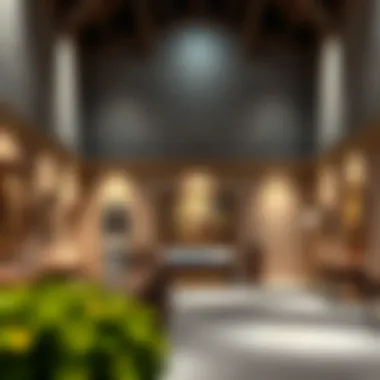
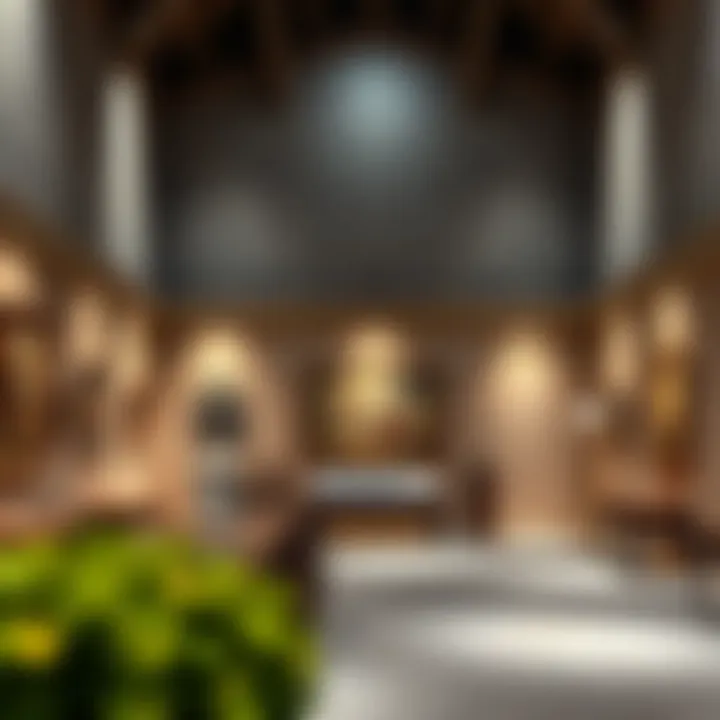
Through these artistic enclaves, Dubai showcases its rich tapestry of cultural influences, reinforcing its identity as a global city. They often host events that engage both residents and tourists, thereby strengthening local pride and enhancing the city’s appeal as a cultural destination.
The construction of these enclosed spaces comes with benefits, from architectural innovation to economic stimulation, creating opportunities for local artists and businesses alike. Therefore, the exploration of these venues reveals much about the city’s commitment to nurturing creativity and fostering a rich cultural environment.
Dubai Opera: A Blend of Art and Architecture
Dubai Opera stands as a prime example of blending art and architecture. This iconic structure, shaped like a traditional dhow, is not only a performance venue but also a statement on design innovation. Hosting a variety of performances ranging from opera to ballet, Dubai Opera caters to a plethora of tastes, making it a crucial piece in the puzzle of the city’s cultural landscape.
The interior of the venue is just as impressive as its outer shell, featuring state-of-the-art acoustics and versatile seating arrangements that can be tailored to different types of performances. The venue’s ability to host not just cultural events but also community initiatives and functions solidifies its role as a cultural nexus. It represents a redefined perspective on enclosed spaces, inviting people to come together, experience art, and forge connections, all under one roof.
Key Features of Dubai Opera:
- Architectural Design: Traditional dhow-inspired shape promotes local heritage.
- Versatile Performance Spaces: Adaptable seating for diverse events.
- Culinary Offerings: Fine dining options available, elevating the visitor experience.
In essence, Dubai Opera is not merely a place to watch a show; it encapsulates the essence of Dubai’s commitment to the arts and community.
The Dubai Frame: A Window to the Past and Future
The Dubai Frame offers a unique perspective on both the city’s history and its future. Standing tall in Zabeel Park, this architectural marvel acts as a literal and figurative framework through which visitors can view the juxtaposition of old and new Dubai. With its oversized picture frame design, it provides that perfect spot for a photograph that embodies the city’s dual identity.
Visitors can ascend to the upper level, where they are presented with a panoramic view that stretches from the historical parts of Dubai, like Al Fahidi District, to the modern splendor of Downtown Dubai and beyond. This shift from historical to modern encapsulates Dubai’s rapid growth and urbanization narrative.
Highlights of The Dubai Frame:
- Interactive Exhibits: Displays illustrating Dubai’s transformation from a humble fishing village to a global metropolis.
- Sky Bridge: Glass-floored section showcasing stunning city views.
- Cultural Reflection: The design itself narrates the story of Dubai’s journey.
In summary, The Dubai Frame proves to be not just an attraction but a powerful reminder of the city’s evolution, creating pathways for cultural appreciation while encouraging future growth and exploration.
“Cultural venues like the Dubai Opera and The Dubai Frame are more than just closed spaces; they shape the very soul of what it means to live in and visit Dubai.”
Thus, exploring these cultural and artistic venues reveals their integral role in not only enhancing the urban landscape but also fostering community, creativity, and connection.
Indoor Entertainment Facilities
Indoor entertainment facilities play a pivotal role in sustaining Dubai's vibrant social fabric, especially during the sometimes forbidding summer months. Even with the city's awe-inspiring architecture and tourist sites, it's within these enclosed spaces that the real pulse of Dubai's entertainment can be felt. Not only do these facilities provide leisure and recreation options, but they also serve as communal hubs where families and friends can gather, away from the sweltering heat.
Indoor entertainment ranges from immersive experiences like themed parks to eclectic dining venues, making it an essential aspect of modern urban living in Dubai. These spaces invite residents and tourists alike to unwind, break away from the bustle of daily life, and foster social connections in a comfortable environment.
Moreover, as urban planning continues to evolve, developers are keen on incorporating these facilities into residential and commercial projects, recognizing their significant pull factor for attracting both locals and expatriates. In summary, indoor entertainment facilities are not just places of fun; they have become vital elements in the city’s cultural and social landscape.
Ski Dubai: An Alpine Experience in the Desert
Ski Dubai is a remarkable testament to what can be achieved in an arid land. Nestled within the Mall of the Emirates, it is the Middle East's first indoor ski resort. With a staggering area of 22,500 square meters, Ski Dubai offers a unique escape from the blazing sun outside. Here, visitors can engage in skiing, snowboarding, or simply enjoy the surreal experience of snow in the desert.
Highlights of Ski Dubai:
- Winter Wonderland: A space that mimics winter, with real snow created under controlled conditions.
- Ski Slopes: Visitors can experience multiple runs with varying degrees of difficulty, accommodating both beginners and seasoned skiers.
- Snow Park: This area features tobogganing hills and interactive features, perfect for a day of family fun.
What's more, Ski Dubai fosters social interactions as people come together to navigate the slopes or relax in the cozy cafes. This experience showcases not only the innovative spirit of Dubai but also reflects a growing trend of integrating entertainment with adventure, providing a refreshing break from traditional leisure activities.
IMG Worlds of Adventure: A Thrilling Escape
IMG Worlds of Adventure is another jewel in Dubai’s indoor entertainment crown. It stands as the world's largest indoor theme park, boasting a variety of rides and attractions that cater to different age groups and preferences. The park is divided into distinct zones, featuring beloved characters and thrilling rides based on Marvel Superheroes, Cartoon Network, and dinosaurs.
Key Features of IMG Worlds of Adventure:
- Diverse Attractions: From adrenaline-pumping roller coasters to interactive experiences, every corner of IMG has something exciting to offer.
- Themed Zones: Themed areas provide immersive experiences, allowing guests to step into different worlds, be it that of a superhero or a prehistoric land.
- Dining and Retail Options: Visitors can enjoy a range of dining experiences and shop for memorabilia, enhancing their day out.
These indoor facilities are not just playgrounds; they offer a multifaceted experience that caters to diverse audiences. In a city known for its architectural marvels, these indoor venues add layers to Dubai’s identity as a global entertainment hub.
"Dubai’s indoor entertainment facilities mirror the city’s spirit of ingenuity, offering residents and visitors not just fun, but also a unique cultural tapestry interwoven with experience and exploration."
Such spaces are crucial for economic stimulation as well, drawing in crowds and fostering local businesses. As Dubai continues to grow, it’s clear that indoor entertainment is not merely an optional aspect of life; it is ingrained in the lifestyle of its residents and visitors.
Enclosed Public Spaces and Parks
The role of enclosed public spaces and parks in Dubai is rather significant, creating a sanctuary amidst the desert metropolis. These areas provide not only a respite from the bustling urban environment but also a sense of community. While the Emirate is renowned for its skies and sprawling arid landscapes, the inclusion of these sheltered venues reflects a nuanced approach to urban design and public health.
Benefits of Enclosed Public Spaces
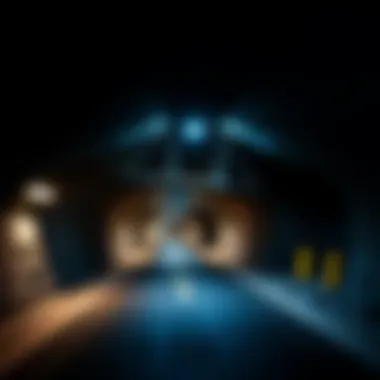
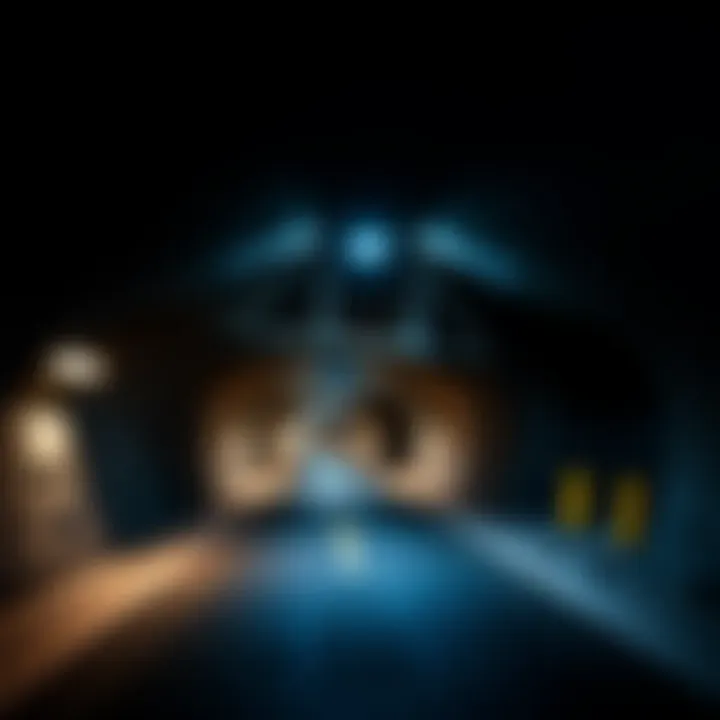
Enclosed parks and public spaces in Dubai serve various beneficial purposes:
- Climate Control: Given Dubai's scorching heat, these enclosed parks offer a cool refuge where residents can engage in recreational activities shielded from the elements.
- Social Interaction: These spaces foster social ties by providing a venue for community events, workshops, or simply a gathering spot for families and friends.
- Health and Wellness: Encouraging an active lifestyle, enclosed parks often provide facilities for sports and fitness, reinforcing the importance of health within urban living.
- Biodiversity: Many enclosed public areas incorporate native flora, promoting biodiversity and educating the public about local ecosystems.
Considerations for Design
When looking at the design of these public spaces, several factors come into play:
- Accessibility: Ensuring that all residents can access these areas is crucial for inclusivity. Paths should be smooth and navigable for all, including those with disabilities.
- Safety Measures: Proper lighting, visible security, and design choices that prevent isolated corners contribute to a safer atmosphere.
- Sustainability Practices: Integration of water-efficient landscaping and solar-powered amenities plays a pivotal role in sustainable urban development.
The End
"In the heart of the city, nature’s embrace offers a transformative experience, linking people to each other and the environment."
Dubai Aquarium: An Immersive Marine World
The Dubai Aquarium, located in the iconic Dubai Mall, stands as one of the largest suspended aquariums in the world, showcasing a vibrant ecosystem filled with thousands of aquatic creatures. Not just a spectacle of marine life, the aquarium serves as a critical educational platform. The importance of this space cannot be overstated; it presents a unique opportunity for visitors to engage with marine conservation. The aquarium features:
- A vast collection of species, from sharks to rays, allowing guests to learn about diverse marine habitats.
- An underwater tunnel that provides an immersive experience where visitors feel they are swimming through the ocean itself.
- Regular feeding sessions and interactive displays that educate guests on marine life and the significance of preserving aquatic biodiversity.
This facility not only serves tourists but stands as an educational tool for schools and families, fostering awareness about environmental stewardship.
Indoor Botanical Gardens: Greenery Amidst the Concrete
Indoor botanical gardens in Dubai are a breath of fresh air, literally. These lush spaces are designed to combat urbanization's concrete jungle effect, providing an oasis for both residents and tourists. Spaces like the Dubai Miracle Garden showcase an exuberant display of flowers and plants that thrive in the heart of a bustling city. The benefits of these gardens include:
- Psychological Benefits: Interacting with nature is known to reduce stress. These gardens offer a peaceful retreat where people can unwind and recharge.
- Educational Opportunities: They play a crucial role in promoting awareness about plant care, sustainability, and ecology.
- Community Engagement: Programs hosted in these gardens can unite individuals who share an interest in gardening, promoting a sense of belonging and community spirit.
As unique as they are beneficial, indoor botanical gardens add aesthetic value while promoting ecological awareness and well-being in urban settings.
In summary, both the Dubai Aquarium and indoor botanical gardens provide crucial insights into the importance of enclosed public spaces. They enhance the urban landscape and serve to educate and engage the community on environmental matters.
Historical Significance of Closed Spaces
The concept of enclosed spaces is not merely a result of modern architectural trends; it has deep historical roots that have evolved over the decades. Understanding this evolution is crucial, as it offers insights into the development of urban spaces in Dubai and their impact on social dynamics and community life.
Evolution of Enclosed Areas Over Decades
Dubai's growth trajectory can be traced back through its enclosed areas, which have undergone remarkable transformations. In the early days, the focus was primarily on utility—creating spaces that sheltered inhabitants from the harsh climate. The traditional wind towers in older neighborhoods served this purpose, channeling cooling winds into homes.
As time rolled on through the 20th century, residents began to crave a connection to the outside world, spurring a shift towards more vibrant communal spaces. The introduction of air conditioning in the late 20th century further revolutionized how spaces were constructed and utilized.
- From modest market stalls to lavish malls, the need for enclosed areas grew with the increasing urbanization. Even the expansion of cultural venues reflected this shift, where the crave for shared experiences became a focus.
- Furthermore, protected spaces allowed for the introduction of various recreational, educational, and social activities without the hindrances posed by weather or environmental factors.
Architectural Innovations in Interior Design
Enclosed spaces in Dubai illustrate architectural innovations that cater to modern lifestyles while embracing Dubai's unique cultural heritage. The designs engage aesthetics with functionality, marrying traditional motifs with contemporary styles.
Such innovations often emphasize open floor plans, which, despite being indoors, maintain a sense of spaciousness. High ceilings adorned with intricate patterns reflect traditional Arabic artistry while offering an unmistakable modern vibe. The use of glass and natural materials in these spaces has further blurred the lines between the interior and exterior, creating a seamless interaction with the environment.
"Architecture is the art of how to waste space." - Philip Johnson
Common architectural advancements observed in Dubai include:
- Biophilic Design: Incorporating greenery within enclosed spaces, like atriums and indoor gardens, not only enhances aesthetics but also promotes well-being.
- Sustainable Building Practices: Given global climate concerns, many structures now embrace sustainable materials and designs, leading to lower energy consumption and better resource management.
- Smart Technology Integration: Modern enclosed spaces are increasingly incorporating features like climate control and energy-efficient systems that adapt to user needs.
In summary, the historical significance of enclosed spaces in Dubai cannot be overstated. They are a testament to the city's adaptability and innovative spirit, shaping not only physical landscapes but also the social fabric of its communities. Historically rich and architecturally advanced, these spaces allow investors, developers, and residents to envision a future where enclosed areas continue to foster connection, creativity, and cultural understanding.
Residential Complexes: The Rise of Enclosed Communities
In recent years, the concept of residential complexes has taken hold in Dubai, reflecting a significant shift in urban living. These enclosed communities offer not just housing, but a comprehensive lifestyle that appeals to a diverse crowd. The rise of such developments can be traced back to the growing demand for safety, exclusivity, and a sense of belonging among residents. As Dubai continues to expand, understanding the dynamics and offerings of these modern enclaves is essential for investors, realtors, expats, and property managers alike.
Features of Gated Communities
Gated communities in Dubai are designed with a focus on safety and privacy, providing a secure environment for families and individuals. Among the standout features are:
- Controlled Access: Most gated communities include checkpoints where security personnel screen visitors and residents alike, minimizing unwanted entry.
- Common Amenities: Many complexes boast shared facilities like swimming pools, gyms, and parks. These communal spaces encourage interaction among residents, fostering a community spirit.
- Landscaping and Aesthetics: Residents often enjoy beautifully landscaped surroundings, complete with walkable areas and green spaces, allowing nature to harmonize with urban living.
- Quality of Life: These communities emphasize family-friendly features, like proximity to schools, healthcare centers, and recreational facilities, enhancing the overall living experience.
Gated communities cater to those looking for a peaceful retreat from the bustling urban environment, thereby playing a pivotal role in attracting affluent expats and local families.
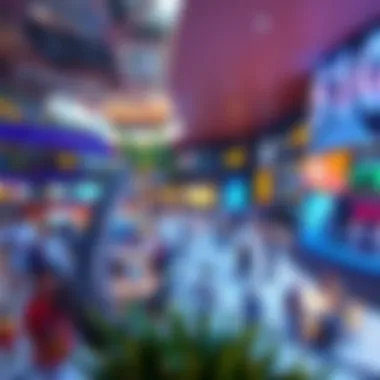
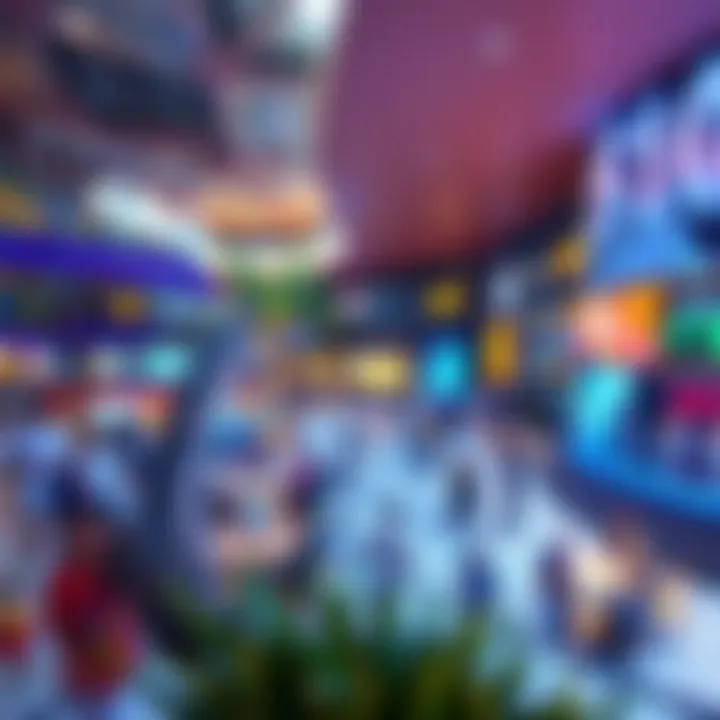
The Role of Private Amenities in Modern Living
In today’s fast-paced world, convenience is king. Private amenities within residential complexes significantly enhance the allure for potential residents. These amenities typically include:
- Fitness Facilities: Many residents seek healthy lifestyles, and having a gym or fitness center within the community means people can easily integrate regular workouts into their day without traveling far.
- Private Parks and Gardens: Dedicated green spaces allow families and individuals to unwind and enjoy recreational activities, fostering a connection with the outdoors, even in an urban setting.
- Convenience Stores and Cafés: Establishing small shops or eateries in or near the complex can significantly improve residents’ day-to-day living, reducing the hassle of grocery shopping or dining out.
- Community Events: Enclaves often organize social events and activities, creating opportunities for residents to meet their neighbors and cultivate relationships. This social aspect strengthens bonds and creates supportive environments.
"The rise of gated communities in Dubai reflects a growing desire for safety and a strong sense of community among urban dwellers."
For more insights on urban lifestyle trends, you can explore resources like Encyclopedia Britannica or Wikipedia.
Health and Wellness Spaces
Health and wellness spaces have emergeed as critical components of urban life, particularly in a bustling city like Dubai. As more people prioritize their mental and physical well-being, the role of these enclosed environments becomes evident. They provide not just a getaway from the fast pace of city life but also offer a sanctuary for rejuvenation and community bonding.
Enclosed spaces geared towards health and wellness take various forms, ranging from luxurious spas to well-equipped fitness centers. Each locale creates a unique atmosphere that promotes relaxation, social interaction, and a general sense of well-being. These facilities, often designed with aesthetics and functionality in mind, attract investors looking to tap into the burgeoning wellness industry in the city.
Spa and Wellness Retreats in Enclosed Settings
Spa and wellness retreats serve as havens for individuals seeking respite from their daily routines. In Dubai, the allure of these spaces lies in their ability to transport guests away from the glitzy world outside into a realm of tranquility. One remarkable example is the Talise Spa located within the Madinat Jumeirah. Here, the calming sound of water, lush greenery, and unparalleled treatments work together to create an oasis of calm.
- Benefits of Spa Retreats:
- Stress Relief: With treatments ranging from aromatherapy massages to meditative practices, visitors often leave feeling refreshed.
- Holistic Health: Many spas offer integrated wellness programs, promoting overall health and not just superficial beauty.
- Social Environment: These spaces encourage interaction, whether it's through shared treatments or group meditation sessions, fostering community connections.
The design of such retreats is also crucial—they tend to emphasize natural elements, gentle lighting, and ergonomically designed spaces that contribute to relaxation. This design philosophy aligns closely with the growing trend of incorporating sustainability in architectural practices in Dubai.
Fitness Centers: Community Enrichment through Indoor Activity
Fitness centers in Dubai create more than just spaces for exercise; they cultivate a sense of community and belonging. As the city grows, so does the love for fitness and wellness. Popular facilities like Fitness First and Gold’s Gym have become hotspots where individuals come not just to work out but to connect with like-minded individuals.
- Key Features of Fitness Centers:
- Diverse Offering: From innovative group classes to high-tech equipment, these centers cater to varied fitness needs.
- Community Engagement: They often host events and challenges that reinforce camaraderie among members.
- Accessibility: Locations are strategically placed to encourage attendance, often featuring extended hours to accommodate different schedules.
Such spaces are instrumental in promoting health literacy, encouraging individuals to embrace healthier lifestyles. For investors and property managers, understanding the evolution and role of these fitness centers can provide insights into future market trends and consumer preferences.
"The transformation towards health-focused living spaces signals a cultural shift where well-being becomes intertwined with daily life in urban settings."
With the increasing recognition of the importance of health and wellness spaces, Dubai’s architecture is likely to continue evolving, prioritizing these essential features as part of the urban landscape.
Challenges and Opportunities
The concept of enclosed spaces in Dubai presents a duality of challenges and opportunities that urban planners and developers must navigate. While these intricately designed areas enhance the city’s architectural prestige, they can also lead to complications in urban planning, environmental sustainability, and social dynamics. Understanding these factors is essential for investors, realtors, and property managers who seek to engage with Dubai’s evolving landscape.
Urban Planning Considerations
When delving into the intricacies of urban planning in Dubai, it becomes vital to consider how enclosed spaces integrate with the overall urban environment. The potential for over-concentration in certain districts can lead to congestion, diminishing the appeal of these spaces.
- Mixed-Use Development: One noteworthy approach is to promote mixed-use developments that combine retail, residential, and recreational facilities. This encourages foot traffic while allowing for a vibrant community atmosphere.
- Accessibility: Ensuring that these enclosed areas are accessible not merely by car but also by public transportation is key. If a mall or a cultural center is tucked away without good transport links, it risks becoming a ghost town.
- Public Spaces: Maintaining a balance between enclosed areas and public spaces helps support community life. Parks and open areas are necessary to counteract the potential claustrophobia that can spring from too many enclosed zones.
Urban planning is a game of chess, where every move impacts the next. Encapsulating spaces often requires foresight and strategic positioning.
Sustainability in Enclosed Design
Sustainability is another crucial pillar when talking about enclosed designs in Dubai. As the nation pushes towards a greener future, there’s an added emphasis on creating eco-friendly enclosed environments.
- Green Building Standards: Adopting green building standards is paramount. Using energy-efficient materials and practices decreases the carbon footprint significantly. For instance, incorporating renewable energy sources, like solar panels, directly in enclosed shopping complexes can help maintain energy efficiency.
- Water Conservation: In a desert city, managing water resources properly is essential. Enclosed spaces should implement systems for water recycling and greywater usage, thus contributing positively to sustainability efforts.
- Waste Management: Effective waste management strategies within enclosed locations can reduce landfill contributions. Enabling recycling facilities and organic waste composting in these spaces can pave the way toward a circular economy.
The considerations shared here do not only contribute to the betterment of enclosed structures, but they also represent a way for stakeholders to engage communities responsibly while meeting economic targets.
In summation, navigating the challenges and opportunities posed by Dubai’s closed spaces requires collaborative efforts from various stakeholders, all striving for sustainable development and enhanced quality of life for residents and visitors alike.
Closure: Perspectives on Dubai's Enclosed Spaces
Reflecting on the various dimensions and layers of Dubai's enclosed spaces reveals how they contribute significantly to the urban landscape. These platforms serve an essential role not only in facilitating commercial activities but in fostering social interactions and community cohesion. As discussed, enclosed spaces like shopping malls, cultural venues, and residential complexes are crucial in shaping the day-to-day experiences of residents and visitors alike.
The economic vitality of these enclosed environments cannot be underestimated. The shopping malls, for instance, do more than just house retail outlets; they create a bustling ecosystem that promotes job creation and consumer engagement. Furthermore, it's interesting to note how residents often see these malls as community hubs rather than mere shopping destinations. This shift in perception underscores the multifaceted role that enclosed spaces play in modern urban settings.
Additionally, cultural and artistic venues contribute a unique aspect to enclosed spaces. For instance, places like the Dubai Opera not only showcase performances but they also inspire a sense of collective identity and pride, while elaborately designed spaces encourage creativity and innovation. By merging art with architecture, these venues invite individuals to explore a deeper connection with their surroundings, often leading to unexpected conversations and collaborations.
Socially, enclosed spaces provide a refuge from the often harsh realities of outdoor environments, especially in the scorching summers of Dubai. They offer indoor parks and recreational areas where families and friends can gather, creating opportunities for bonding and leisure. This aspect is particularly important for expats who may find a sense of community in such internal environments.
Key Benefits of Enclosed Spaces
- Safety and Comfort: In an enclosed setting, individuals can enjoy a sense of security, whether it’s experiencing an evening out at the mall or winding down in a private community.
- Adaptable Utilization: Many of these spaces are designed for versatility, hosting multiple events, from exhibitions to community gatherings.
- Sustainability Initiatives: As noted in earlier discussions, the architectural innovations—like energy-efficient designs—show that enclosed spaces can contribute positively to sustainability efforts.















